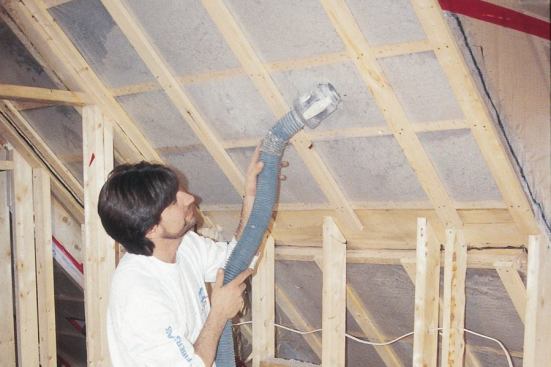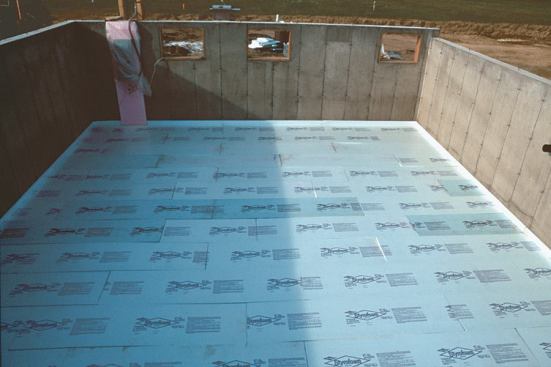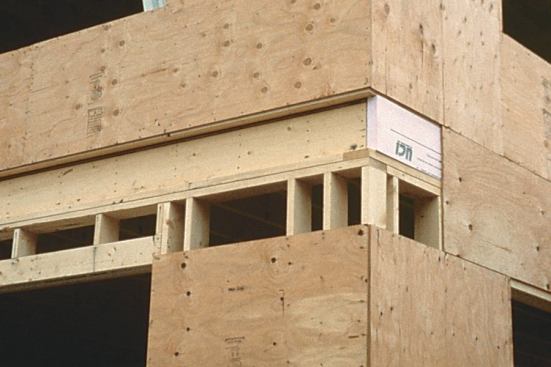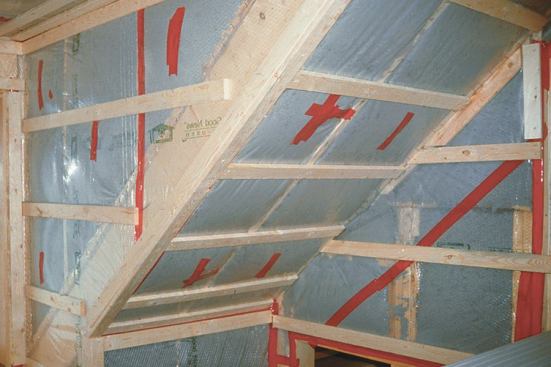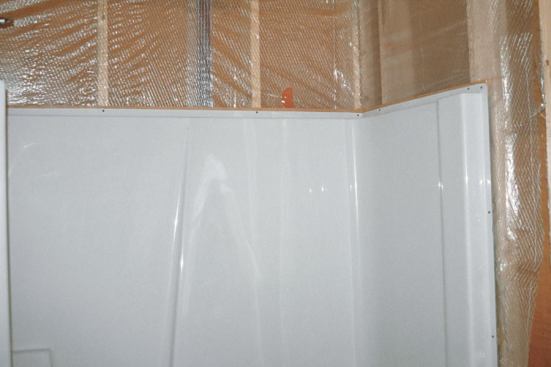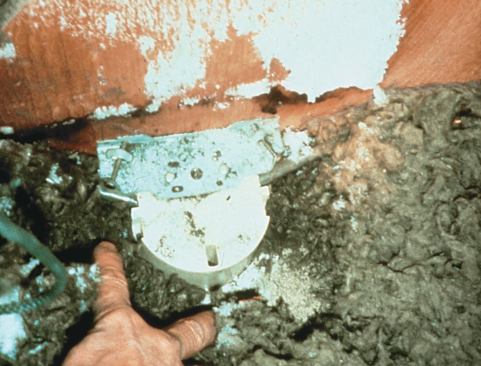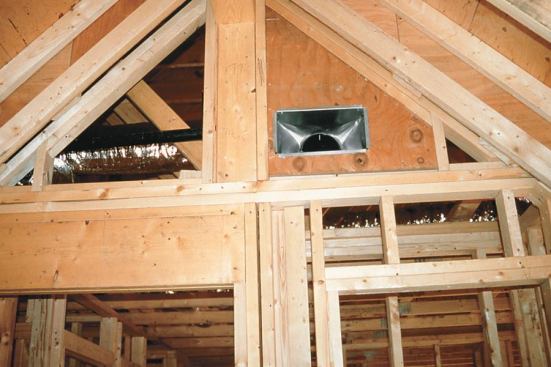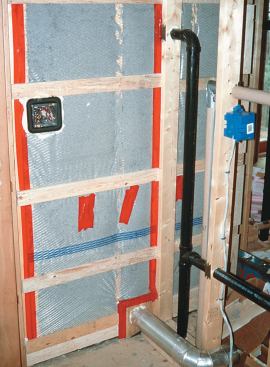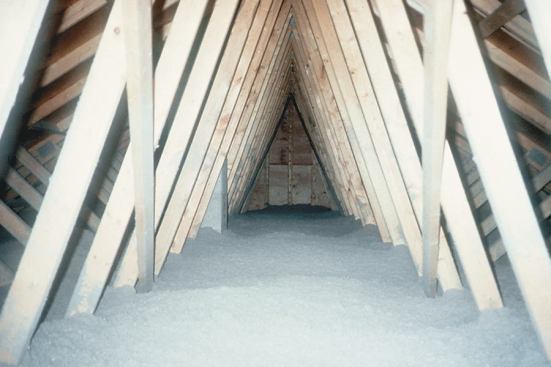For a tight, energy-efficient house, plan your air-sealing strat…
Locating the Thermal Envelope
The continuous barrier formed by the insulation and air barrier is called the thermal envelope. Where to locate the thermal envelope depends, to some extent, on builder preference. Should it follow a flat ceiling or the sloping rafters? Should it include the crawl space? In many cases, there is no single right answer to these questions. However, it is important to make a choice and stick with it, and then explain to your framing crew and subcontractors where the thermal envelope is located. In the past, many builders excluded basements and crawl spaces from the thermal envelope. However, building scientists now recommend sealing and insulating crawl space walls. In cold climates, the prescriptive requirements of the Model Energy Code mandate basement wall insulation. Including the basement inside the building’s thermal envelope is usually simpler and no more expensive than building an uninsulated basement, because insulated basements do not require ceiling insulation, duct sealing, duct insulation, or pipe insulation.
In a typical Cape, the second-floor kneewalls are insulated, as well as a portion of the first-floor ceiling. But when the thermal envelope is located at the kneewalls, air sealing becomes very difficult. Interior air can escape through the first floor ceiling into the cold area behind the kneewalls. Exterior air from the soffit vents, which should rise above the insulation in the rafter bays to ventilate the roof, often enters the living area through gaps in the kneewall. An access door in an insulated kneewall is awkward to build, because it needs to be carefully insulated and weatherstripped. Air sealing is easier when the rafter insulation is extended down to the plates, bringing the triangular crawlspace behind the kneewalls within the building’s thermal envelope (see “Air-Sealing the Story-And-A-Half,”‘ 8/95). This also permits the area behind the kneewall to be used for storage without the need for an airtight access door. — P.B.
